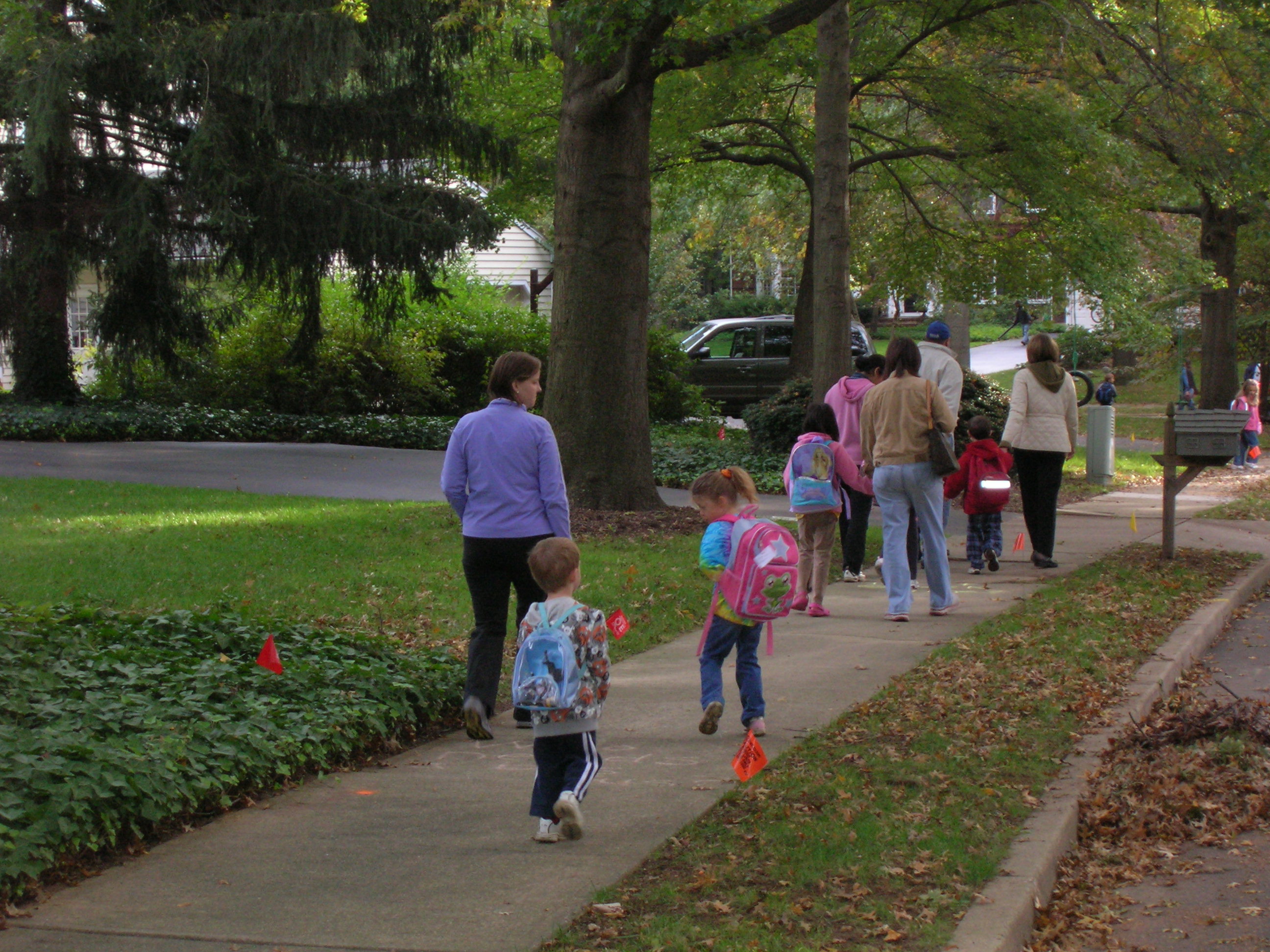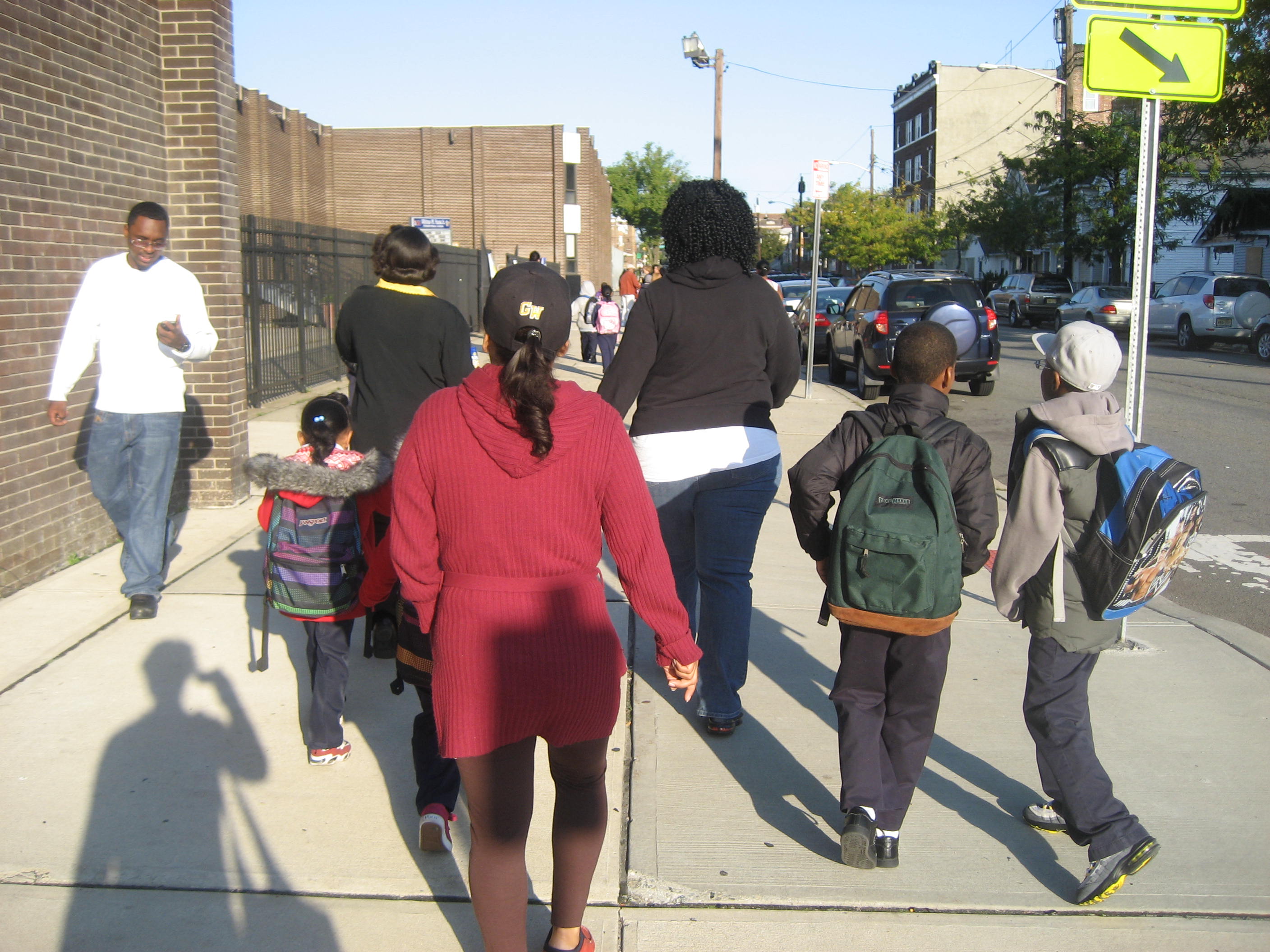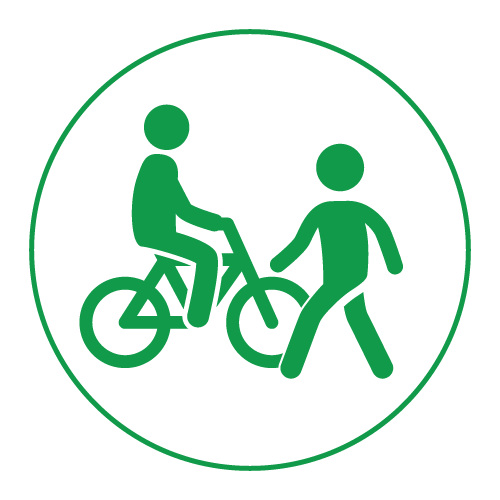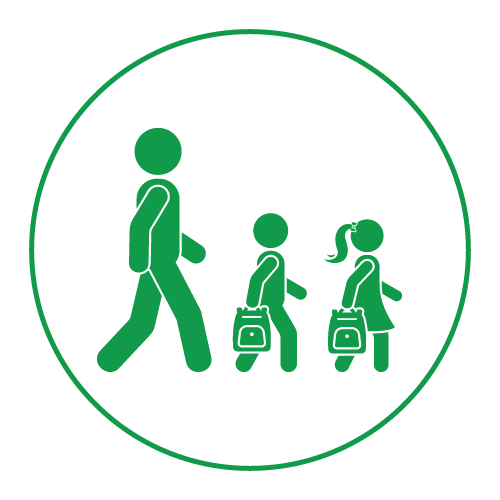Planning a Walking School Bus
Planning a walking school bus takes a little effort to coordinate people, places, and logistics whether informal such as two families walking to school or more formally structured with walking routes, meeting points, pre-determined stops, timetables, and schedules of parent volunteers.
Completing a planning document such as a Safe Routes School Travel Plan is recommended for any community interested in implementing a walking school bus or other SRTS program. The main goal of the travel plan is to create safer routes for walking and bicycling by identifying problem areas and proposing solutions.
To plan a walking school bus, here is a list of important tasks with details and sample documents to get one going in your community:
Form a Strong Partnership
- Identify key partners from the school and community such as the Board of Education, School Principal, Nurse, Health PE teachers, PTOs, Wellness Committees, Traffic Safety Officers, and Crossing Guards.
- Once you have identified key partners, establish roles for parent volunteers:
- Who will maintain contact with the school?
- Who will coordinate contact between partners?
- Who will contact partners and what will they be asked?
- Who can plan a timeline?
- Identify other important contacts that could provide assistance including state, county, and regional organizations such as SafeKids chapters, Transportation Management Associations, health and safety organizations, mayor, etc.
- At a minimum, support from parents and the school is needed to identify safety concerns and promote the benefits of a walking school bus.
- Click Build your Safe Routes Team for more information on recruiting volunteers to help with your walking school bus.
- You can also contact your SRTS Regional Coordinator for assistance in planning a walking school bus.
Map the Walking School Bus Routes
- What types of maps are available? Who can provide them? You can easily Map your School Neighborhood using these simple school neighborhood and school site map generators.
- Where do students live?
- How will your program run? (a few gathering locations, more frequent scheduled stops at homes and/or intersections, a park and walk plan, etc.)
- Who will conduct the walkability audit to determine appropriate routes? Print out the Walk Assessment Checklist which can help you assess the walking school bus route.
- When will the routes be identified and pre-tested by adults? Here are some examples of walking school bus map routes:
Formalize Logistics
- Will you have formal rules for participation? Here are some sample documents that can be downloaded and edited for your use:
- Will you require signed consent forms? Here are some sample forms that can be downloaded and edited for your use:
- What are your policies for student or volunteer absences?
- What will you do in case of an emergency?

Recruit Volunteers/Participants and Develop an Action Plan
- Decide how to recruit volunteers. Here are some sample forms that can be downloaded and edited for your use:
- Decide what information to include in volunteer training
- Decide how to recruit students to participate
- Write a timeline for your plan:
- When will the program start?
- When will you have registration forms?
- When/where will training and distribution of route information take place?
- When must volunteers be recruited?
- When must students be recruited?
- Who will do each task?
- Download a Sample Action Plan to help get started.
- Check out the School Travel Plan Goals and Actions section of the website for more information on developing an action plan.
Promote and Evaluate the Walking School Bus
Promote the Walking School Bus:
- How will you promote your program? Where and when will you promote and seek registration? Who will take charge of each promotion idea?
- Inform and invite the media to the launch of your walking school bus. Use the Sample Media Advisory Template which can be tailored to your event.
- Invite local officials/celebrities to be part of your event. Ask your municipal government and/or Board of Education to pass a Model Resolution of Support–Municipality and BOE or Proclamation to show support of your walking school bus.
- Who will take charge of each promotional idea?
- Who will handle registration?
Conduct an Evaluation:
- How will you track student participation?
- Were the participating students walking prior to the program? Did the participants previously arrive by motor vehicle or ride a bus?
- Did students or volunteer drivers drop-out of the program? If so, why?
- What are the main reasons that students are using the Walking School Bus?
- What is not working very well and why?
- Is the program being delivered as planned?
- What can be done differently next time to achieve better outcomes?
- What has changed as a result of implementing a Walking School Bus program?
- Check out the Evaluation of a School Travel Plan section of the website for more information, methods, and tools to measure the success of your walking school bus.

Consider Future Plans
- How will you keep the program fun and exciting?
- How can you expand the program? (additional routes, bike trains)
- How will you continue to recruit students and volunteers in future years?
The National Center for Safe Routes to School has an Online Training Module for the Walking School Bus which highlights important tips and strategies for planning one.
You can also always contact your SRTS Regional Coordinator for assistance in planning a walking school bus in your community.





